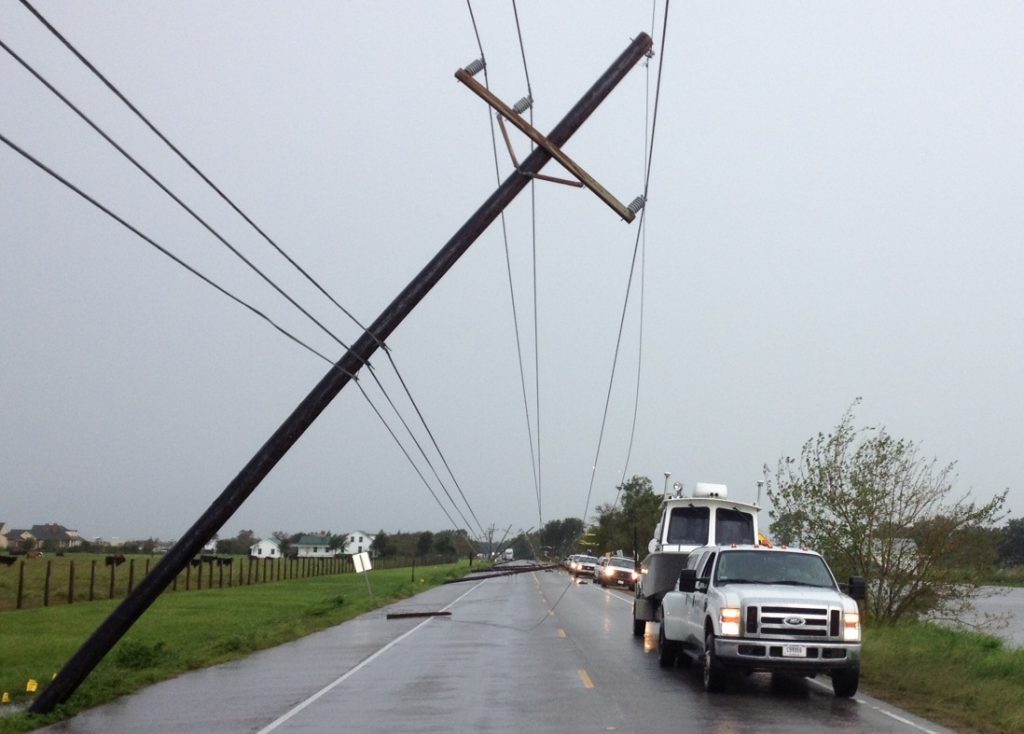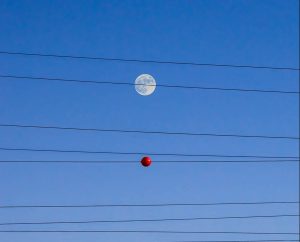
By P&R-Tech (Portland, Or.)
Properly maintained power lines aren’t just crucial for public safety but are essential for business operations. Three key areas where this counts most are in preventing fire, minimizing power outages, and protecting the environment. While power line safety is technically the responsibility of a utility company, local businesses often bear the brunt of a nearby downed power line.
Consequences of a Downed Power Line
When coming across a damaged power line the first thing that should come to mind is your safety and the safety of others. Downed power lines can be extremely dangerous. Brief your staff on how to handles these situations.
In general, don’t handle them yourself. Don’t ignore potential hazards either. A fallen electrical line that’s off to the side of the road can lead to bigger problems later. Make sure to report these dangers to your local utility company and/or emergency services. Always assume that a transmission/electrical line is charged, energized, live, or carries electricity. How ever you describe it, make sure you and your staff understand what this means to ensure safety.
The business consequences of a downed power line can be extremely costly. A downed line could shut down street access to your business causing delays to shipments and orders. Your customers and staff might not be able to reach you either. Downed lines can cause forest and brush fires which could destroy your place of business and put you, your staff, and customers in danger. Last but not least, a loss of power at your workplace could damage supplies, cut off communication, and delay normal business operations.
But it’s not just the downed power line alone that’s the immediate danger. A power line can also energize and pass electricity to other nearby objects. According to the Occupational Safety and Health Administration (OSHA), these can include metal fencing, pipes, plants, buildings, and telephone/ fiber optic cables. OSHA adds, even manhole castings and reinforcement bars (rebar) in the pavement can become energized by downed wires.
Forces of Nature and Electrical Lines
Natural forces can bring down a power line regardless of preparation. But with proper monitoring and maintenance, many of these instances can be avoided. New tech like Dynamic Line Rating (DLR) devices use environmental conditions or a set of the conditions to calculate the ampacity of an electrical conductor. So on hot days or days when ice is weighing down a power line, utilities will know the status of that line in real time.
For example, strong winds can knock over trees that collapse onto electrical poles or lines. Extreme cold combined with moisture can cause ice to build up on power lines, putting unnecessary stress on them. This can compromise the integrity of the lines, poles, and equipment holding them together.
Birds can also cause havoc on overhead power lines since they “stream” every time they take flight. Droppings often cause buildup on the line that could lead to line sag or failure. Nests on utility poles are another bird-related hazard. These can tangle up equipment and attract unwanted pests. Utilities often use proper markings, such as bird diverters, to protect not only their infrastructure but also wildlife. According to the U.S. Forest Service, an estimated 8 million to 57 million birds are killed annually through overhead power line collisions.
Power Line Markers and Vehicle Safety
If you or an employee sees a power line that appears to abnormally sag or droop, it’s important to report it ASAP. Drooping power lines can be the result of wind, ice, aging infrastructure, leaning poles, or other technical causes.
It’s especially important to report sagging power lines that run above streets and other places occupied by vehicles. Keep in mind that some power lines are installed with little overhead clearance. These lines are typically marked with a low line marker to warn motorists and especially trucks. Utilities can properly mark these lines to avoid costly damages and to ensure public safety. If you spot one that could use a warning or clearance marker, let your utility know.
In a worst-case scenario, like if your vehicle does happen to come into contact with a low-hanging overhead line, call emergency services for help. If you see a downed line touching another vehicle, make sure not to go near it or its occupants while you wait for help.
The key takeaway here: any time you spot a hazardous power line, call the local utility company immediately.
Overhead Power Lines and the FAA
Larger and much higher elevated power lines have their own set of guidance for markings. The FAA outlines guidelines for properly marking and lighting power lines for aircraft in the FAA Advisory Circular. This document specifically mentions that spherical markers should be used to identify overhead wires. They should be spaced equally along the wire at approximately 200-foot intervals. It recommends alternating aviation orange, white and yellow, with orange markers at each end. If the power line needs less than four markers, then they are all to be aviation orange.
As one example, this SpanLiteTM Self-Illuminated Power Line Marker meets or exceeds these FAA guidelines. There are also numerous other types of power line markers to consider. These are necessary to protect the utility’s investment, but, more importantly, as a matter of public safety. Adequate line markers warn aircraft and vehicles of the presence of power lines and can also keep birds and wildlife away.
It’s important for utilities to check their warning lights and other markers frequently. This ensures that they are in good working condition, as suggested by the FAA.
Watch the installation of a P&R Tech Power Line Marker Ball below:
–
With its extensive experience working with utilities, regulators, and other officials, P&R Tech can help you determine which markers you need.
Contact P&R Tech today to find out more.

